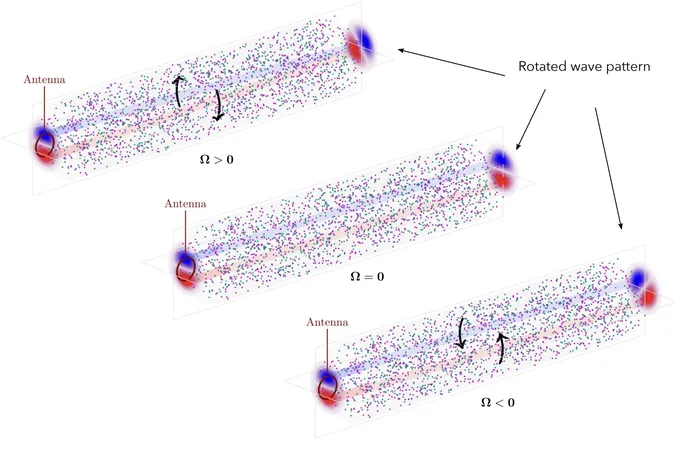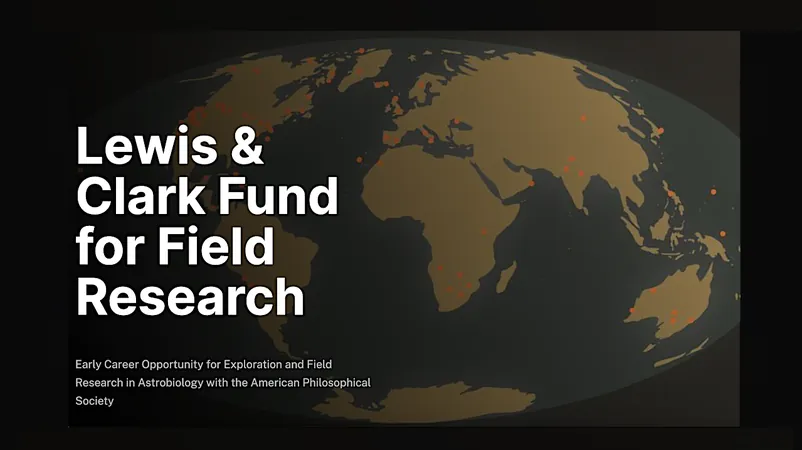
Revolutionary Discovery: Physicists Capture Image Rotation in Plasma
2025-07-08
Author: Wei
In a groundbreaking study, scientists have unveiled a captivating phenomenon known as "light dragging," which occurs when light seems to be influenced by the movement of the medium it traverses. This remarkable effect, typically imperceptible in ordinary materials, has now been observed in a plasma-based system by researchers from several prestigious institutions, including the University of Toulouse and Princeton.
Published in *Physical Review Letters*, this pioneering discovery involved the interaction of magnetohydrodynamic (MHD) waves, specifically Alfvén waves, within magnetized plasma. Renaud Gueroult, the lead author, emphasizes that while the concept has been understood since the 1800s, witnessing it in action has largely been restricted to controlled environments with artificially slowed light.
"Our research demonstrates that plasma can inherently support slow wave motions alongside rapid rotations, opening up new realms of possibility for observation," Gueroult indicated.
The Science Behind the Discovery
Plasma, an ionized gas characterized by free electrons and ions, serves as an ideal medium for exploring fundamental physics and wave dynamics. In their experiment, the researchers counteracted the quick nature of Alfvén waves using a system that allowed them to control plasma rotation through electrically charged electrodes.
The result? They observed a striking phenomenon known as image rotation, where the pattern of the transverse wave rhythmically twisted as they manipulated the plasma's rotation.
Implications for Astrophysics and Beyond
Surprisingly, the patterns observed in the experiment aligned with theoretical predictions of light dragging in simpler isotropic media. Gueroult noted that this could indicate broader implications, suggesting that similar effects might exist in various environments, notably in the realm of astrophysics.
"This marks the first significant observation of image rotation in a naturally occurring medium. Given the prevalence of Alfvén waves in nature, we might expect to see this phenomenon in a variety of contexts, which could translate into valuable insights for astrophysical studies or improvements in plasma fusion technology," Gueroult added.
A Future of Discovery and Innovation
The implications of this research extend far beyond the lab. The insights gained could facilitate new advancements in remote rotation sensing technologies, potentially enhancing our understanding of cosmic phenomena and advancing fusion reactors.
As Gueroult aptly put it, "This study is just a glimpse into the intricate relationship between motion and wave dynamics. There’s a wealth of research left to uncover, whether in controlled experiments or celestial investigations."

 Brasil (PT)
Brasil (PT)
 Canada (EN)
Canada (EN)
 Chile (ES)
Chile (ES)
 Česko (CS)
Česko (CS)
 대한민국 (KO)
대한민국 (KO)
 España (ES)
España (ES)
 France (FR)
France (FR)
 Hong Kong (EN)
Hong Kong (EN)
 Italia (IT)
Italia (IT)
 日本 (JA)
日本 (JA)
 Magyarország (HU)
Magyarország (HU)
 Norge (NO)
Norge (NO)
 Polska (PL)
Polska (PL)
 Schweiz (DE)
Schweiz (DE)
 Singapore (EN)
Singapore (EN)
 Sverige (SV)
Sverige (SV)
 Suomi (FI)
Suomi (FI)
 Türkiye (TR)
Türkiye (TR)
 الإمارات العربية المتحدة (AR)
الإمارات العربية المتحدة (AR)